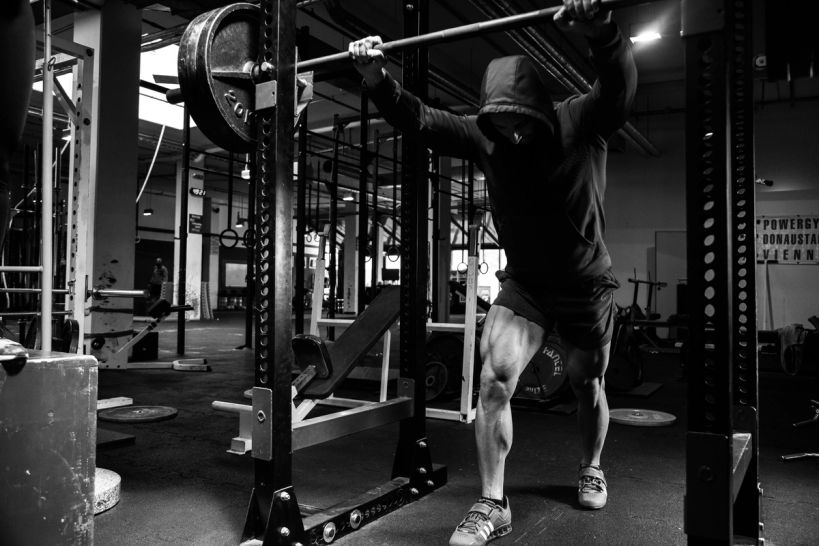The Importance of Stretching Before Working Out
Introduction
Stretching, often overlooked and undervalued, is an essential component of any workout routine. Whether you're an avid gym-goer or a beginner just dipping your toes into the world of fitness, understanding the importance of stretching is crucial for maximizing the benefits of your exercise regimen. So, let's delve into this topic and unravel the wonders that stretching can bring to your body and mind.
Briefly define stretching and its purpose
In its simplest form, stretching refers to the act of elongating muscles and other soft tissues in order to improve flexibility. It involves moving our bodies in a way that stretches out specific muscle groups gently. The primary purpose of stretching is to increase our range of motion in joints, which not only aids our everyday movements but also enhances our overall athletic performance. When we stretch, we are essentially working on lengthening tight muscles and tendons that have been shortened due to prolonged periods of sitting or lack of physical activity. By doing so, we enable these structures to regain their optimal length, allowing for improved posture and a decreased risk of injury during exercise. Moreover, stretching helps relieve muscle tension by increasing blood flow to those areas.
Highlight the significance of incorporating stretching into a workout routine
If you've ever witnessed someone diving headfirst into a workout without warming up or engaging in any stretches beforehand, you probably cringed at the potential disaster waiting to happen. Stretching plays an integral role in preparing our bodies for physical exertion by gradually increasing blood flow to muscles and joints. By incorporating stretching exercises before working out, especially dynamic stretches that mimic the movements involved in your chosen activity, you actively prepare your muscles for action. This pre-workout ritual helps increase joint mobility while reducing muscle stiffness – key factors in preventing strains and sprains. Another significant advantage of stretching is its ability to enhance flexibility. By regularly engaging in stretching exercises, you train your muscles and tendons to become more pliable, allowing for a broader range of motion. Whether you're an aspiring yogi aiming for those advanced poses or an athlete aiming to improve your athletic performance, flexibility is the gateway to unlocking your full potential. Moreover, incorporating stretching into your workout routine can provide mental benefits as well. As you focus on the sensations in your body during stretches, it becomes a form of meditation that allows you to be present and mindful. This mindfulness not only improves concentration during workouts but also helps relieve stress and promote relaxation. Stretching is far from being just a mundane pre-workout ritual. It serves as the foundation upon which we build our physical capabilities and safeguard ourselves against injuries. So, let's journey together through the various benefits of stretching before working out and explore different techniques that can take our fitness game to new heights!
Enhancing Flexibility
Elaborate on how stretching improves joint range of motion
When it comes to flexibility, stretching is the key that unlocks the door to a world of improved joint range of motion. By engaging in regular stretching exercises before your workout, you are effectively increasing the elasticity and length of your muscles. This process allows your joints to move more freely and smoothly through their full range of motion, without feeling limited or restricted. Stretching helps to release tension accumulated within the muscles and connective tissues surrounding your joints. This release allows for greater flexibility and an increased ability to perform various exercises with proper form. For example, if you're aiming for a deep squat during your workout routine, flexible hip flexors will prevent discomfort or strain in that movement.
Discuss the positive impact on overall body flexibility
The benefits of improving joint flexibility extend far beyond just one area of your body. When you stretch regularly before working out, not only do you enhance flexibility in specific muscles but also throughout your entire body. Flexibility isn't limited to being able to touch your toes; it encompasses every muscle group. With increased overall body flexibility, everyday activities become easier as movements become smoother and more effortless. Whether it's bending down to tie your shoelaces or reaching up high for something on a shelf, having flexible muscles allows for fluidity in these motions without the risk of straining or pulling a muscle.
Injury Prevention
Explain how stretching prepares muscles for physical exertion
Stretching acts as a crucial warm-up routine that prepares our muscles and tendons for physical exertion during workouts. It helps increase blood flow to the targeted areas by dilating blood vessels and delivering essential nutrients and oxygen required by our muscles. Furthermore, stretching activates sensory receptors called proprioceptors within our muscles and tendons. These proprioceptors provide feedback to our brain about the position and movement of our body parts. By engaging these receptors through stretching, we enhance our body's ability to perceive and respond to potential movements, reducing the risk of injury during exercise.
Discuss the role of increased blood flow in reducing injury risks
Increased blood flow is an essential aspect of injury prevention during workouts. When you stretch before exercising, your heart rate elevates, leading to enhanced circulation throughout your body. This increased blood flow brings vital nutrients and oxygen to your muscles, making them more pliable and less prone to strains or tears. Stretching also promotes better muscular coordination by stimulating nerve pathways that communicate between muscles and the brain. This improved communication allows for more precise muscle contractions during exercise, consequently minimizing unstable movements that could result in injuries.
Improving Performance
Highlight the connection between flexibility and athletic performance
Flexibility plays a pivotal role in enhancing athletic performance across various sports and activities. Whether you're a professional athlete or a casual fitness enthusiast, improved flexibility directly translates into better overall performance levels. Flexible muscles allow for optimized movement patterns, which help maximize power output while minimizing the risk of injury. For example, gymnasts with flexible bodies can execute complex acrobatic maneuvers with grace and precision due to their heightened range of motion.
Explain how stretched muscles can generate more power and efficiency during workouts
When your muscles are properly stretched before engaging in physical activity, they become primed for action. Stretching helps elongate muscle fibers, allowing them to contract more efficiently when activated during exercises or workouts. By optimizing muscle length through stretching routines, you enable an increase in power generation within these muscles. This means that every push-up or weightlifting repetition will benefit from greater force production as your well-stretched muscles work at their maximum potential. In addition to power, stretched muscles also contribute to improved efficiency during workouts. With increased flexibility, your body can move through exercises with less resistance and wasted energy. This efficiency enables you to perform more repetitions or maintain higher intensity levels for longer durations, helping you reach your fitness goals more effectively. Remember, incorporating stretching into your pre-workout routine is not just about preventing injuries but also about unlocking the full potential of your body. By enhancing flexibility, reducing injury risks, and improving performance levels through regular stretching, you'll pave the way towards a fitter and healthier lifestyle.
Different Types of Stretching Techniques
Stretching is a fundamental component of any workout routine, but did you know that there are various techniques you can employ to maximize its benefits? Let's explore three primary types of stretching: static stretching, dynamic stretching, and proprioceptive neuromuscular facilitation (PNF) stretching.
Static Stretching
In the realm of stretching, static stretching is perhaps the most commonly known and widely practiced technique. It involves holding a stretch for an extended period, typically between 15 to 60 seconds. The aim here is to reach a point of mild discomfort without causing pain. This method allows the muscles to lengthen and relax gradually. Static stretching offers several advantages. For starters, it enhances muscle elasticity by improving the flexibility of individual muscle fibers. By holding a stretch for an extended duration, tight muscles gradually loosen up over time, leading to increased range of motion and improved overall flexibility. Furthermore, static stretches are suitable for individuals seeking relaxation and stress relief after a long day or as part of their cool-down routine. By releasing tension in specific muscle groups such as the hamstrings or quadriceps, this method promotes relaxation and aids recovery.
Dynamic Stretching
If you prefer an active approach to warm-up before exercising or want to mimic movements relevant to your workout regime, dynamic stretching should be your go-to technique. Unlike static stretching where you hold poses for longer durations, dynamic stretches involve controlled movements that engage multiple muscles simultaneously. The primary goal of dynamic stretching is not only to increase flexibility but also to warm up the body by increasing blood flow and raising core temperature. These movements often resemble those used during exercise or sports activities but are performed in a controlled manner without pushing beyond comfortable limits. A few examples of dynamic stretches include leg swings, arm circles, walking lunges, and torso twists. These movements prepare your muscles and joints for the upcoming physical demands while simultaneously improving your range of motion.
Proprioceptive Neuromuscular Facilitation (PNF) Stretching
For those seeking to take their flexibility to the next level, proprioceptive neuromuscular facilitation (PNF) stretching offers an advanced technique that involves alternating contraction and relaxation phases. This method utilizes a partner or external resistance to facilitate a deeper stretch in targeted muscle groups. The key principle behind PNF stretching lies in the body's neuromuscular reflexes. By contracting a particular muscle group before stretching it, you can initiate a neurological response within that muscle group, prompting it to relax more profoundly during the subsequent stretch. This contraction-relaxation pattern is repeated several times to achieve maximum benefits. PNF stretching can significantly improve flexibility beyond what static or dynamic stretches alone can achieve. It is commonly used by athletes, dancers, and individuals engaged in activities requiring exceptional range of motion. It's important to note that PNF stretching should be approached with caution and learned under proper guidance due to its advanced nature. When performed correctly, though, this technique can yield remarkable results by unlocking greater flexibility potential within your body.
Tips for Effective Pre-Workout Stretching Routine
Setting Goals for Flexibility Improvement
When it comes to stretching before a workout, having clear goals can make a world of difference. Setting realistic flexibility improvement goals tailored to your individual needs is essential. Remember, Rome wasn't built in a day, and neither is your flexibility! Start by assessing your current level of flexibility and identifying areas that need improvement. Do you want to touch your toes effortlessly or achieve a deeper split? Whatever it may be, setting specific and attainable goals will keep you motivated throughout your stretching journey. To set realistic goals, it's important to consider factors such as your body type, genetic predisposition, and any pre-existing limitations. Keep in mind that progress varies from person to person, so comparing yourself to others isn't helpful. Instead, focus on what feels right for your body and strive for gradual improvements over time. Celebrate every small victory along the way, as each step forward brings you closer to achieving those big stretches!
Suggest Tracking Progress to Stay Motivated
Tracking your progress is an excellent way to stay motivated on your flexibility improvement journey. It allows you to see how far you've come and serves as a reminder of the dedication and effort you've put into stretching before each workout. Consider keeping a journal or using fitness apps that allow you to record the details of each stretching session. Incorporate notes about the stretches performed, duration held for each stretch, perceived discomfort or ease, and any observations about feeling more flexible or improved range of motion. By documenting these details regularly, you'll be able to look back at how much closer you are toward achieving those desired flexibility milestones. Remember that progress might not always be linear; some days may feel tougher than others—embrace the journey regardless!
Warming Up Before Stretching
Before diving into a stretching routine, it's crucial to warm up your body properly. Think of warming up as priming your muscles for the work they are about to do. Warming up raises your body temperature, increases blood flow, and prepares your muscles for the upcoming stretches. It can be as simple as performing light aerobic exercises like jogging in place or jumping jacks for five to ten minutes. Additionally, dynamic movements that mimic the exercise motions you'll engage in during your workout can be an effective way to warm up specific muscle groups. For example, if you plan on running, incorporate some walking lunges or leg swings to activate and loosen up your leg muscles. Remember that warming up is not about pushing yourself to the extreme; it's about gently easing into the upcoming workout.
Conclusion
Incorporating stretching into your pre-workout routine is undeniably important for various reasons: improved flexibility, injury prevention, and enhanced performance. By setting realistic goals based on individual needs and tracking progress along the way, you'll stay motivated on your journey toward greater flexibility. Remember to always warm up before stretching to prepare your muscles and increase blood flow. As you embark on this stretching adventure, embrace each small step forward and be patient with yourself—flexibility takes time! Trust in the process and savor every little improvement along the way. With consistent effort, dedication, and a positive mindset, you'll not only see progress but also enjoy a more fulfilling workout experience. So go ahead, stretch those limits and reach new heights of flexibility!
About The Author


Get your macronutrients breakdown
Fill out the form below to get a preview of your recommended daily calorie and macronutrient breakdown.

Stubborn Subcutaneous Fat Loss | 3 Tips
Stubborn Subcutaneous Fat Loss | 3 Tips Introduction When it comes to shedding those stubborn pounds, one particular type of fat seems to be particu...

Why I Stopped Gaining Muscle (The Honest Truth)
Why I Stopped Gaining Muscle (The Honest Truth) The Importance of Gaining Muscle When it comes to health and fitness, gaining muscle holds a signifi...



